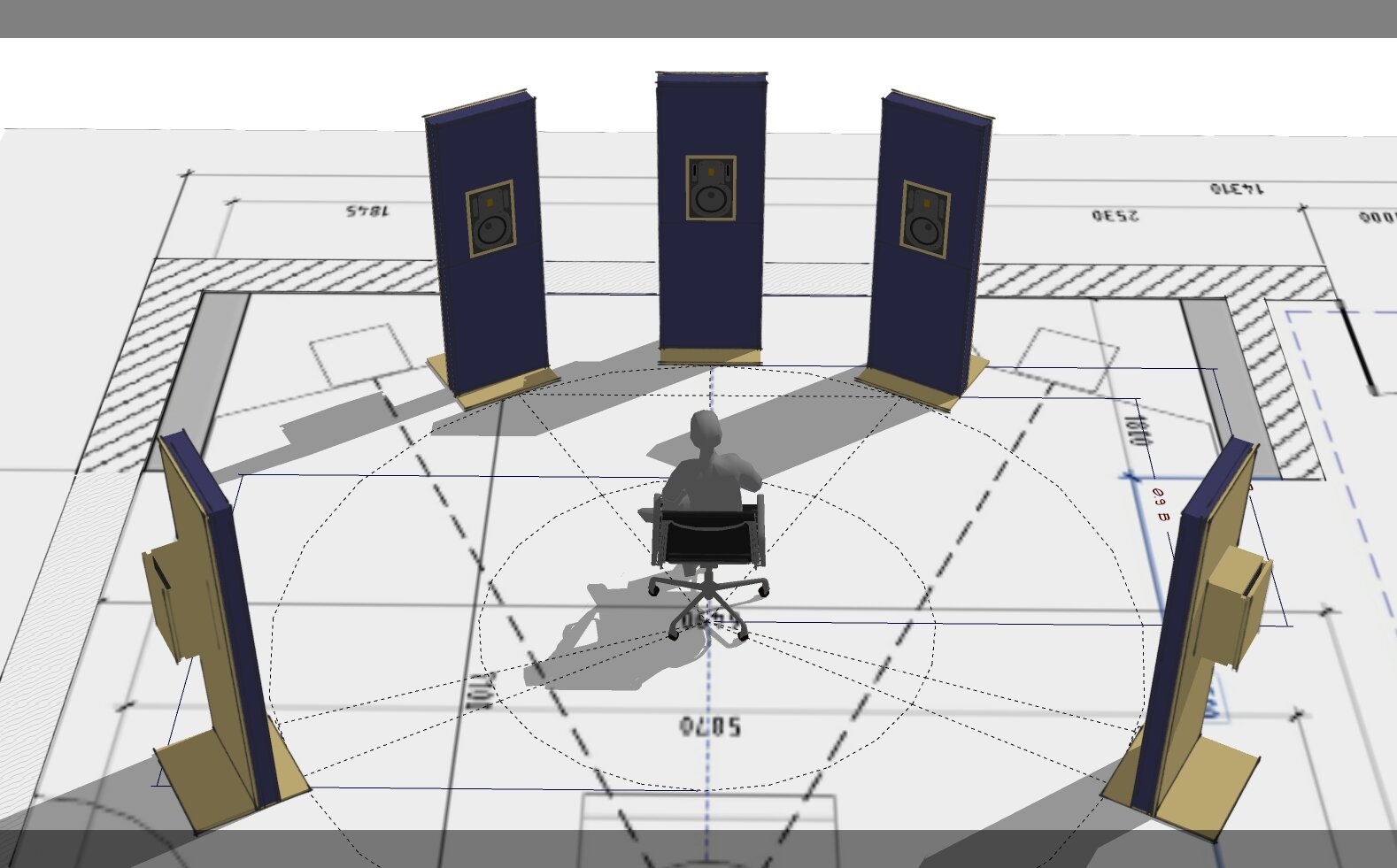-
Posts
2,197 -
Joined
-
Last visited
Posts posted by Glenn Stanton
-
-
it's because you're not using Kontakt... you're using Komplete Kontrol... load up Kontakt on your synth rack and it will work...


-
maybe when you copy them, your channel settings are copied? and if those don't align with Kontakt then they won't sound. check the copied MIDI track channel settings vs the Kontakt settings for that instrument. otherwise, i have no idea why it's not working...
-
next - go to your synth rack (Alt+9) and add it

my preference is separate MIDI and Audio tracks but do whatever works for you

load the drum kit you want and then add your MIDI sequence for the drums - drag and drop grooves, manual entry, step sequence, etc etc

-
basically it's a MIDI vst - so it should go into one of your VST directories that you scan with your plugin manager.
then this:
-
so if you enter a number of notes manually, and they play, then you copy those and paste them into a new measure - do they still play? and if you copy them into a new track - same?
-
maybe check to see if the notes are playable by some other VI? like SI-strings has a wide range of notes covered to see if they're in range? check to see if the notes have velocity? that they are of sufficient duration to sound what the synth is set to?
-
i sometimes use the CSHumanize MidiFX Plugin but only for minor velocity changes. i find the timing bits feel too coarse even in small amounts, so for the timing bits i'll either adjust by hand or use the normal quantize tools.
it would be really nice if the new CAL was based on Javascript-like scripting so blocks can be explicit, full array, object, and prototype support etc versus depending on the indentation models used in other languages... lol you could then write proper text-formated "libraries" for controlling not only the app but plugins etc...
-
press and hold down shift as you open the project to bypass the plugins. see if it opens. then load each plugin until it breaks. don't use that plugin until you fix it.
-
are you running Windows 7? the last updated driver for the IO26 appears to be 13 years ago in 2010... and was for Windows 7 which has a different audio architecture than Windows 10 and later.
iO|14 & iO|26 - Windows 7 Drivers [v3.5.3.8671]
Adds supports for 32-bit and 64-bit versions of Windows 7. Updated by Alesis 06/16/2010.and maybe follow their troubleshooting guide in case there is something flakey with the FW device - drivers? hardware degrading?
Troubleshooting FireWire Driver Installation (rackcdn.com) https://7132afa424c2f1a2ab6d-54d68a14e2e7c1f76563a2d8c3e9fd82.ssl.cf2.rackcdn.com/1563/documents/firewire_installation_troubleshooting.pdf
if its critical for your work, then maybe check out some new IO units which can be had for under $400 w/ 8 channels. Behringer, Presonus, Tascam, and others make decent quality 8 ch units for USB 2/3. even a pair of 4-channel USB units of the same brand can typically use the same ASIO driver.
-
i use the master as the feed to my monitors and i may move the volume up and down there. having a separate "print" with pre-fader send means even if i forget to reset the master to 0, the print output is set to 0 for the rendering. the print buss (and all others which might feed the main h/w out are set to "none" unless i'm specifically using them, in which case the master gets set to none and i set the other buss to the h/w output, or if i'm using a separate h/w for headphones (e.g.), then i just set the outs to those and leave as is, then use my monitor controller to mute the room monitors if i'm going to use the headphones.
technically, if i wanted to just mute and unmute from the DAW, i'd have a "monitor" buss (another pre-fader send from master) for the room monitors so i can just mute and unmute rather than switch none or h/w out, but i just didn't want another buss... lol ?
DAW template - 01 - process.svg DAW template - 02 - mix.svg DAW template - 03 - workspace.svg
-
 1
1
-
 1
1
-
-
I believe JohnnyV had the best option - exclude in CW using the plugin manager, they're still available (in case you need a VST2 version if the VST3 is misbehaving) but hidden w/o being uninstalled. many plugins updater apps, if you uninstall the VST2, will see the configuration as "broken" and reinstall them. so, by excluding them, the updates can happen as expected, but the exclusion setting in CW means they're not visible. and it also means if you have apps which only support VST2 (but not VST3), they still have access to those plugins...
-
 3
3
-
-
and this process works in reverse as well ?
-
4 hours ago, Will. said:
Uhmm! When did i say they were the same? Best you read that post again.
i only wanted to support your comment on oversampling as there is the potential for bit depth expansion in some cases as well - e.g. 32-bit float processing then truncated to 24-bit whilst performing the oversampling process as well.
-
 1
1
-
-
the mouse wheel is your friend: shift+wheel = left <> right; crtl+wheel = up <> down; crtl+alt+wheel = enlarge <> shrink audio waveform; and alt+wheel = zoom centered on pointer. once you let those 4 methods become second nature then moving to where you need to, and zooming in and out becomes really fast,
-
 1
1
-
-
On 8/20/2023 at 10:54 AM, Will. said:
We sometimes forget to do oversampling in a plugin or virtual instrument on a track.
oversampling is different than bit depth -- but both can impact the quality of what you hear. i think bit depth is more important for most people (24-bit vs 16-bit). sample rate after a certain point (imho 96Khz) is less detectable to most people, and definitely more storage space consuming.
https://www.izotope.com/en/learn/digital-audio-basics-sample-rate-and-bit-depth.html
?
-
 1
1
-
-
one more cool thing (at least with the AAS Strum GS-2) - if you have multiple sections -- same chords / notes -- but want to use program bank changes or CC to switch between keyboard, guitar and loop, you can "stack" the articulations and the corresponding parts play when put into the given mode (because they're mutually exclusive in accepting the switches...). ?

-
 2
2
-
-
if you're not using them for something else, then yes. i did on my system as i don't use them for anything.
-
# of samples in a given instrument, and the range at which the sample player can interpret and apply velocity levels, can impact the levels available - so if i have 2 samples per note - one loud, one half that, then setting the level any where below the trigger velocity for that sample will always be pretty the same. having the instrument with 16 sample levels / note type will be much more flexible, and if the sampler app playing it can respond to velocity in smaller increments, then the sky is the limit.
-
 1
1
-
-
i use them to create different rhythmic patterns with my guitar VI - if they don't have a native one, i simply create one - effectively similar to the key switching but with some extra features on how they're applied and packaged nicely and reusable.
-
 1
1
-
-
it should be something you can set up in any modern DAW - i have a few "listen" busses - a "-12db" (quiet mix checking - pre-fader off master) and "master" (feeds room monitoring & basic 2-track bits), a "NX / VSX / Sound ID" for room simulation in headphones (also pre-fader send), and a "print" buss pre-fade off the master for final export.
-
the dither adds a noise component (not detail) to the LSBs (avoiding a "quantinization error" when truncating digital values) when you convert from (say) 24-bit to 16-bit (i.e. dropping the bottom 8 bits). if you're doing final mix in prep for mastering - leave dithering off and send in same resolution you are mixing in. if you're trying to produce an MP3 (etc) directly off the mix, then pick one of the POW dithering options. note: the results will not be as good as say the Ozone or WaveLab etc dither options. S1 vs CW vs etc may likely have different dithering options and aliasing filters.
it is interesting that no matter what we do - noise is always going to be part of audio ?
some reference: What Is Dithering in Audio? (izotope.com) https://www.izotope.com/en/learn/what-is-dithering-in-audio.html
-
 1
1
-
-
one caveat for clip gain - it can impact how effects behave - so things like compression and saturation (or guitar amp sims etc) can end up behaving differently so consider you may have to do some compensation on those to accommodate the changes in clip gain. one reason to do the clip gain automation (sort of dynamic equalisation) before inserting and setting up any effects which can be impacted by those changes.
-
 1
1
-
-
here's one not so obvious - but i think was installed recently during one of the MS Edge updates - "Realtek audio effects" in "software components" - before: random clicks and glitches, after disabling: clean again. drove me nuts for a couple of days.

-
 1
1
-
-
+1 on the install -- also - i keep all my Spitfire content on my content drive under a single folder -- this way whatever login is used, the content is the same for all users.



copied midi notes are not played in Kontakt and Reaktor instruments in cakewalk
in Cakewalk by BandLab
Posted · Edited by Glenn Stanton
worked for me. i created a MIDI track and dragged your MIDI over, set the ch to 1, opened kontakt with a synth. a new audio track with the output to st1+2.